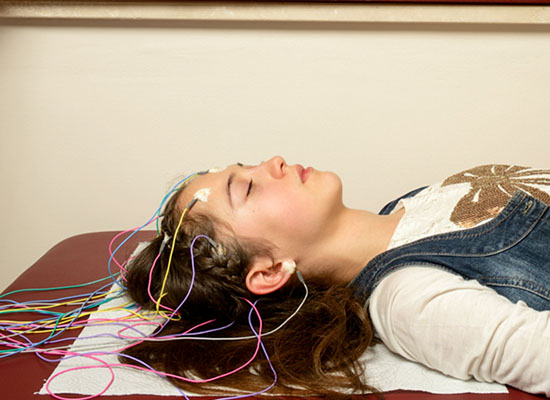
Polysomnography, known as a sleep study, is a test used to diagnose sleep disorders. Polysomnography records your brain waves, the oxygen level in your blood, and your heart rate and breathing during sleep. It also measures eye and leg movements.

In the multiple sleep latency test (MSLT), a person is given 4-5 opportunities to sleep every two hours during normal wake times. The specialist uses the test to measure the extent of daytime sleepiness (how fast the patient falls asleep in each nap, also called sleep latency), and also how quickly REM sleep begins.

A Split night study is a combination of a Diagnostic study and a Titration study. It is performed when a pt shows signs of severe Obstructive Sleep Apnea. After 3 hours of Diagnostic study if there is moderate to severe obstructive sleep apnoea then it is followed by the treatment portion of the Sleep Study which is called a Titration(using CPAP)

Titration studies are overnight sleep tests available at ASRA Sleep Centre. A Continuous Positive Airway Pressure (CPAP) machine is used to treat patients diagnosed with Sleep Apnea. During the titration study, you will be asked to wear a mask that goes over your nose and mouth during sleep.

An electroencephalogram (EEG) is a recording of brain activity. During this painless test, small sensors are attached to the scalp to pick up the electrical signals produced by the brain.

The pap-nap is a short, daytime sleep study used to acclimate patients with sleep-disordered breathing to continuous positive airway pressure (CPAP) therapy. CPAP therapy includes the use of a small machine that provides steady air pressure through a hose and mask to keep your airways open while you sleep.

Actigraphy is a validated method of objectively measuring sleep parameters and average motor activity over a period of days to weeks using a noninvasive accelerometer [1-6]. The accelerometer is housed in a small device that is worn like a wristwatch.

Positive airway pressure (PAP) therapy is a generic term applied to all sleep apnea treatments that use a stream of compressed air to support the airway during sleep. With PAP therapy, you wear a mask during sleep.

Insomnia is a common sleep disorder that can make it hard to fall asleep or stay asleep. It also can cause you to wake up too early and not be able to get back to sleep. Cognitive behavioral therapy, sometimes called CBT, can effectively treat long-term sleep problems like insomnia. Generally, it's the first treatment recommended

For patients with mild to moderate obstructive sleep apnea, dental appliances or oral mandibular advancement devices that prevent the tongue from blocking the throat and/or advance the lower jaw forward can be made. These devices help keep the airway open during sleep. A sleep specialist and dentist with expertise in oral appliances for this purpose should jointly determine if this treatment is best for you.